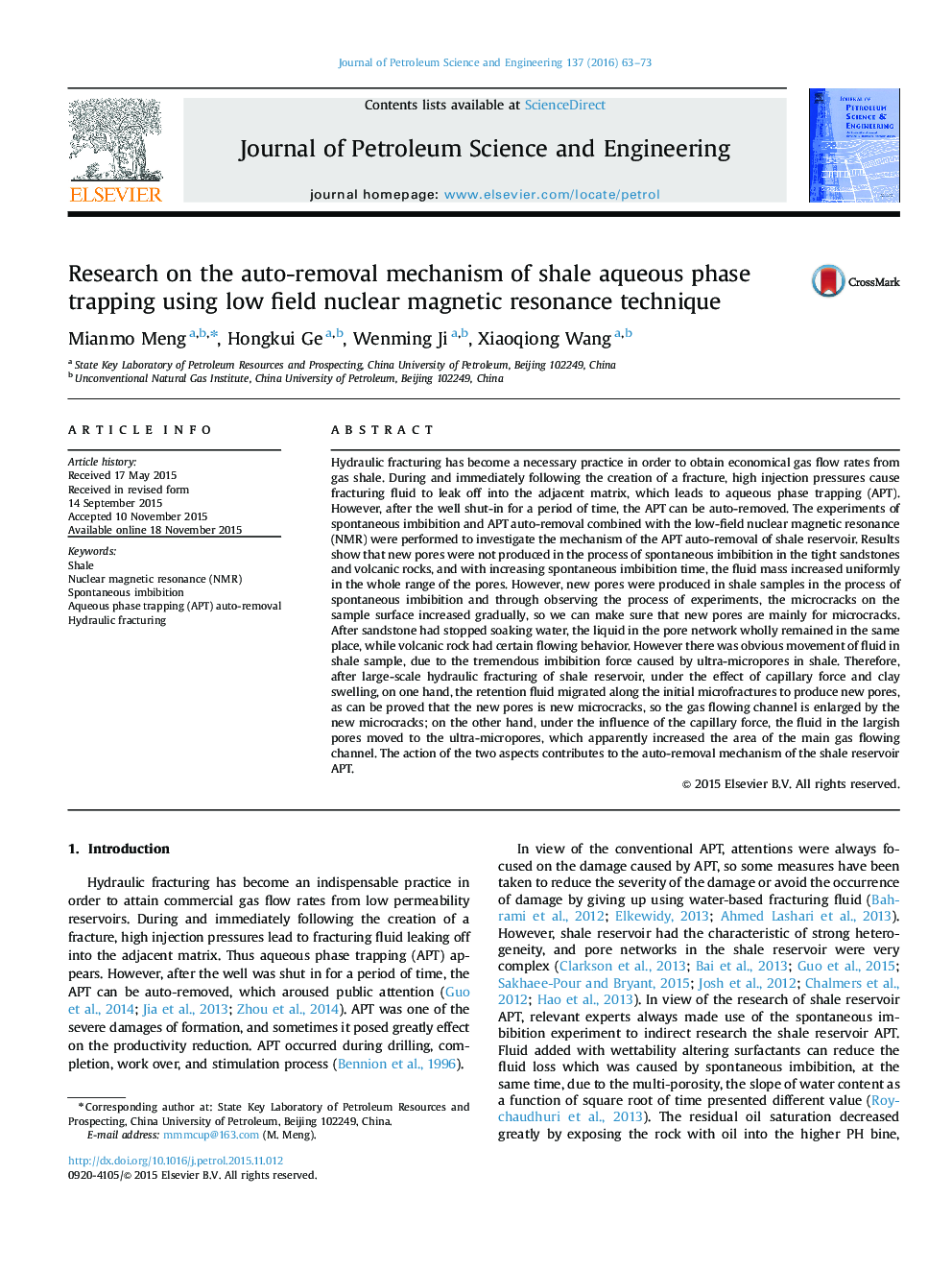| کد مقاله | کد نشریه | سال انتشار | مقاله انگلیسی | نسخه تمام متن |
|---|---|---|---|---|
| 1754638 | 1522804 | 2016 | 11 صفحه PDF | دانلود رایگان |
• Sand reservoir cannot auto-remove APT due to lacking microfractures and ultra-micropores.
• Volcanic reservoir has some ability to auto-remove APT because of possessing some ultra-micropores.
• Shale reservoir has the ability to auto-remove APT as it is full of initial microfractures and ultra-micropores.
Hydraulic fracturing has become a necessary practice in order to obtain economical gas flow rates from gas shale. During and immediately following the creation of a fracture, high injection pressures cause fracturing fluid to leak off into the adjacent matrix, which leads to aqueous phase trapping (APT). However, after the well shut-in for a period of time, the APT can be auto-removed. The experiments of spontaneous imbibition and APT auto-removal combined with the low-field nuclear magnetic resonance (NMR) were performed to investigate the mechanism of the APT auto-removal of shale reservoir. Results show that new pores were not produced in the process of spontaneous imbibition in the tight sandstones and volcanic rocks, and with increasing spontaneous imbibition time, the fluid mass increased uniformly in the whole range of the pores. However, new pores were produced in shale samples in the process of spontaneous imbibition and through observing the process of experiments, the microcracks on the sample surface increased gradually, so we can make sure that new pores are mainly for microcracks. After sandstone had stopped soaking water, the liquid in the pore network wholly remained in the same place, while volcanic rock had certain flowing behavior. However there was obvious movement of fluid in shale sample, due to the tremendous imbibition force caused by ultra-micropores in shale. Therefore, after large-scale hydraulic fracturing of shale reservoir, under the effect of capillary force and clay swelling, on one hand, the retention fluid migrated along the initial microfractures to produce new pores, as can be proved that the new pores is new microcracks, so the gas flowing channel is enlarged by the new microcracks; on the other hand, under the influence of the capillary force, the fluid in the largish pores moved to the ultra-micropores, which apparently increased the area of the main gas flowing channel. The action of the two aspects contributes to the auto-removal mechanism of the shale reservoir APT.
Journal: Journal of Petroleum Science and Engineering - Volume 137, January 2016, Pages 63–73
